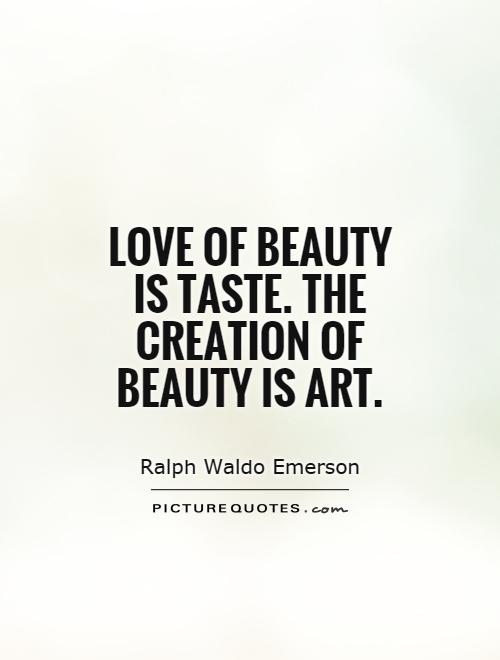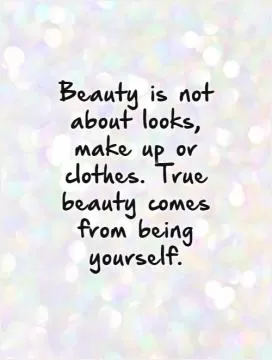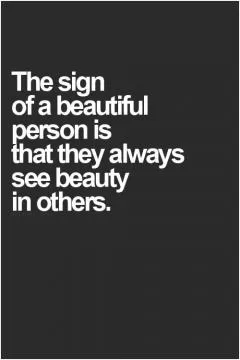Love of beauty is taste. The creation of beauty is art

Love of beauty is taste. The creation of beauty is art
Ralph Waldo Emerson, a prominent American essayist, lecturer, and poet, was a firm believer in the power of beauty and art. He understood that the appreciation of beauty is a matter of personal taste, but the ability to create beauty is a true art form. In his essay "Art," Emerson explores the relationship between beauty, taste, and art, emphasizing the importance of both the appreciation and creation of beauty.Emerson believed that the love of beauty is a reflection of one's individual taste. Each person has their own unique preferences and perceptions of what is beautiful. This appreciation of beauty is a deeply personal experience that can vary greatly from person to person. Emerson saw this diversity in taste as a testament to the richness and complexity of human nature. He believed that the ability to recognize and appreciate beauty is a gift that should be cultivated and celebrated.
However, Emerson also recognized that the true essence of beauty lies in its creation. The act of creating beauty is a form of art that requires skill, imagination, and inspiration. It is not simply a matter of reproducing what is already considered beautiful, but of bringing something new and unique into the world. Emerson saw art as a way of expressing the innermost thoughts and emotions of the artist, capturing the essence of beauty in a tangible form.
For Emerson, the creation of beauty was a sacred act that required dedication, passion, and a deep connection to the natural world. He believed that true art was a reflection of the divine, a way of connecting with the universal spirit that permeates all of creation. In this sense, art was not just a means of self-expression, but a way of transcending the limitations of the material world and tapping into a higher realm of existence.












 Friendship Quotes
Friendship Quotes Love Quotes
Love Quotes Life Quotes
Life Quotes Funny Quotes
Funny Quotes Motivational Quotes
Motivational Quotes Inspirational Quotes
Inspirational Quotes